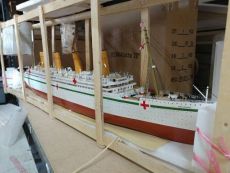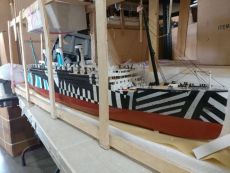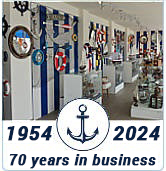Handcrafted Model Ships - Cruise Ships
Cruise Ships
Since 1954, Handcrafted Model Ships guarantees the lowest price, the highest quality and a 100% money back guarantee on Cruise Ships.
Decorate your home, or give as a gift to someone special our large selection of Cruise Ships.
Shop with confidence and showcase your passion for Cruise Ships with fast and free shipping on orders over $99!
| (12 Items) Sort: |
RMS Titanic Models
Grand vessels designed for pure luxury and elegance, magnificent cruise ships have cut through the seas since the early 1900s, both technological masterpieces and awe-inspiring beauties. Handcrafted Model Ships offers fine, museum quality replicas of all your favorite model cruise ships, from the amazing Queen Mary model and SS United States model to to the legendary and unequaled RMS Titanic.
Cruise ships and ocean liners occupy a special place in the hearts of the traveling public. Not only are they the largest ships upon which most people will commonly travel, but their combination of luxury services and amenities with exciting or exotic locations make voyages aboard one of these great vessels a memory that will last a lifetime.
Handcrafted Model Ships is proud to offer an extensive line of Ocean Liner and Cruise Ship models spanning the Golden Age of Ocean Liners in the early 20th century as well as modern cruise ships of today. Relive the grandeur and opulence of the great ocean liners of the past or celebrate an exciting voyage of your own aboard a luxury cruise ship with one of our models.
In the age before commercial jet aircraft, the only method of travel between continents was by ship. Throughout most of the Age of Sail, the vagaries of wind and weather made establishing any regular schedule for long voyages impossible to maintain, and vessels were commissioned for specific journeys to carry passengers or cargo across the ocean.
The first regularly scheduled trans-Atlantic passenger service did not begin until 1818, when a company named Black Ball Lines established scheduled service between New York and Liverpool. Growth of the young American economy and ever-increasing immigration from Europe quickly turned the North Atlantic into the busiest route for ocean liners carrying passengers, mail and cargo.
Initially dominated by clipper ships with an average journey of two months, in 1837 a steam ship named Great Western entering service as an ocean liner and made the crossing in a mere 15 days. Though still possessing sails to take advantage of favorable winds and relieve the demand upon early and still inefficient steam-engines, the Great Western and other paddle-wheel steamers offered travelers the reliability of consistent speed and operators the ability to maintain a regular and predictable schedule.
The latter half of the 19th century saw the slow but steady decline of sailing clipper ships as the favored ocean liners. The clippers were replaced by the advancing technologies of iron-hulled ships with propeller drives and more efficient steam engines. The last two ocean liners built with auxiliary sails entered service in 1884, and thereafter all newly constructed vessels for such service were exclusively steamers.
Thus began the Golden Age of the Ocean Liner, lasting from the late 19th century until World War II, when grand steam ships grew ever-larger and increasingly luxurious. Constructed as the industrial and technological marvels of their day, the mighty ocean liners were also a source of national pride as countries endeavored to build larger and faster ships than those of their rivals. With a new emphasis on comfort, they catered not only to the wealthy and elite of society, but also the millions of immigrants who would come to the dramatically growing United States throughout that period.
In 1907, British liner service Cunard introduced sister ships Mauretania and Lusitania. Powered by steam-turbines, they were large, powerful and fast ocean liners that pushed the standards of their day. Since the 1830s, passenger liners had been unofficially competing to achieve the fastest trans-Atlantic crossing for an award known as the Blue Ribald. Mauretania captured the record and held it intact for an astounding 20 years. Lusitania had a very different claim of notoriety, for in 1915 she was sunk by a German U-boat that suspected her of carrying contraband. Her sinking and the resulting civilian loss of life contributed to turning American sentiment against Germany and ultimately to the entry of the United States into World War I.
1910 saw a new class of slower but larger vessels with White Star Lines launching RMS Olympic, to be following by a pair of sister-ships; in 1912 by RMS Titanic and in 1915 the RMS Brittanic. The largest ocean liners of their day, the sisters were unfortunately ill-fated. Though Olympic enjoyed a lengthy career of passenger service, Britannic was requisitioned by the British government for the war effort and served as a hospital ship until striking a mine and sinking in 1916, while RMS Titanic was famously lost on her maiden voyage after striking an iceberg on 14 April 1912.
The tragic loss of life suffered in the sinking of the RMS Titanic resulted in a rapid modernization of maritime regulations regarding ocean liners, as legislation and government oversight of the industry had failed to keep up with the expansion and growth of the ships. However, despite advances in safety, speed and comfort the inter-war years were difficult for ocean liners suffering through the Great Depression coupled with legislation from the US Congress seeking to limit once-unimpeded immigration. As German and French liners like the SS Normandie, with her revolutionary hull design and turbo-electric engines, traded the Blue Ribald the British government joined Cunard and White Star into a single company in order to launch the Queen Elizabeth and sister Queen Mary, who captured the Ribald first in 1936, then reclaimed it in 1938 and held the honor until 1952.
Desiring to stake it place in North Atlantic Ocean Liner history, the U.S. Government subsidized the construction of the SS United States, partly on condition that she be designed for rapid conversion into a troop ship or hospital ship, a role routinely demanded of ocean liners during wartime throughout their history, if the need ever arose. The largest ocean liner constructed entirely within the United States, she captured the Blue Ribald as the fastest passenger liner to cross the Atlantic in either direction (taking approximately 3.5 days), and continues to hold the record to this day.
Advanced in aircraft technology during WWII, however, heralded the end of the era of the ocean liner as commercial jet service in the 1960s proved a safe and much faster method of travel. Though trans-oceanic passenger service dwindled, a new market arise to takes its place as vacationers became increasingly attracted to the amenities offered by evolving fleets of cruise ships. Taking over the mantle of their ocean liner ancestors, the cruise ships have continued to grow in size, but now focus more on luxury, amenities and service than on speed.
Whereas ocean liners were designed to transport passengers from one point to another, crossing potentially high seas and encountering stormy weather in the notorious North Atlantic, newer cruise ships tended to remain in calmer, coastal waters and seas. They were designed for comfort as they journeyed vacationers between several short-term destinations before generally returning to their original ports of call.
Cruise ship vacationing actually dates back into the 19th century, when Hamburg-America Lines began sending its ocean liners on lengthy southern cruises during the worst of the North Atlantic winter season. Other lines followed and some ships were designed for easy conversion between ocean and cruise service, until 1900 then Hamburg-America launched their first purpose-built cruise ship.
Although smaller ocean liners initially found continued life as converted cruise ships once they were overtaken by the jet age, many of the design characteristics needed for trans-oceanic travel made the mighty ocean liners unsuitable for cruising. High freeboards to resist storms and waves limited open decks and ocean-view suites. Powerful engines required for speed consumed too much fuel and the deep draught that gave them stability in rough seas did not allow them to enter shallower, tropical or tourist-destination ports.
It was during the 1980s that the cruise industry exploded to become the multi-billion dollar market it is today. More passengers vacation on cruise ships worldwide each year than the total number of immigrants brought to the United States through Ellis Island throughout the entire golden age of the ocean liner. Every year since 2001 has seen the addition of nine or more newly-built cruise ships joining the world’s fleets. These massive vessels described as “balcony-laden floating condominiums” are more than twice the tonnage of the once-mammoth Titanic, and feature the latest in modern amenities comforts, luxury, entertainment, dining and service. While these behemoths cater primarily to a North American and European clientele, a host of their older cousins steam in smaller markets such as the Asia-Pacific region.
Today, these massive cruise ships occasionally undertake trans-oceanic journeys, but since 2008 only the RMS Queen Mary 2 of Cunard Lines (formerly Cunard-White Star) maintains regularly-scheduled and true ocean liner service. Although she also engages in special-event cruises, including an 81-day circumnavigation of the globe or an 8-night circuit of the British Isles to mark her 5th birthday, RMS Queen Mary 2 remains the last standard bearer of a once-dominant lineage of grand and elegant ocean liners, catering now not to those who wish to travel across the ocean with the greatest speed and technology available to the modern travel, but rather affording a peaceful and relaxing get-away to those who wish precisely to avoid it.





 Handcrafted Model Ships
Handcrafted Model Ships

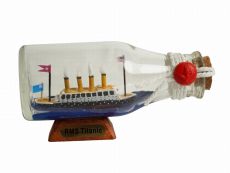

(1).jpeg)

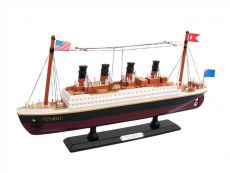
.jpeg)

